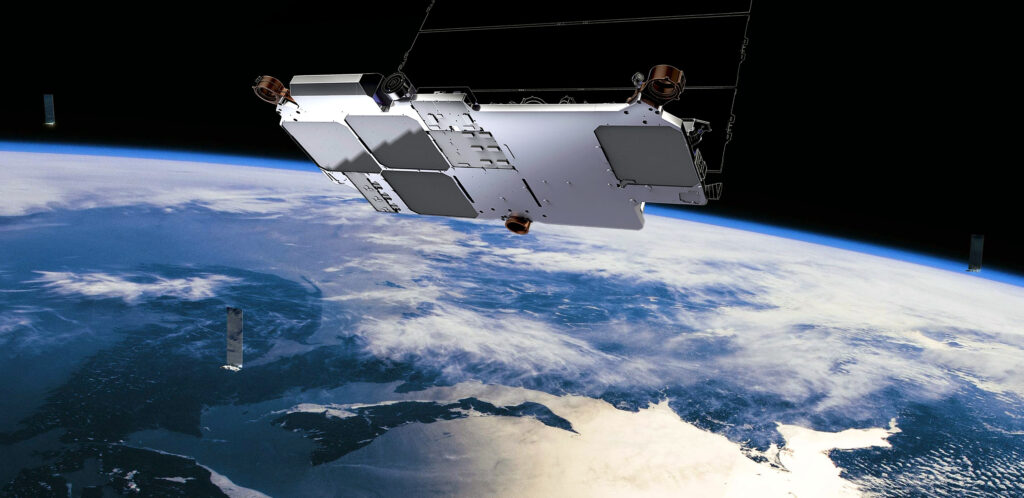Stable connectivity at 35,000 feet or the middle of the ocean has long implied slow connections with barely attainable 10-digit megabits. The second generation of SpaceX’s so-called laser mesh constellation is set to change that rulebook. By the end of 2025, the company claims that Starlink Gen-2 satellites will deliver up to 1 gigabit per second of two-way bandwidth to commercial airplanes and oceangoing ships, a level fast enough to stream 4K video, conduct real-time video conferences, and sync the cloud in a cabin or ship crew.
The way the laser mesh functions The laser mesh system operates by transferring a skin of light through a grid of points that realigns the anatomy of the organism.
Satellites carry the traffic down to ground gateways and back up into the air via legacy satellites, adding thousands of kilometers and considerable latency. Unlike Gen-2 Starlinks, however, the satellite has onboard inter-satellite lasers that weave a high-speed optical fabric in space. Packets are sent between nodes at the speed of light in a vacuum until they pass over a satellite, which is positioned to blast a portion of the data directly at the teleport or the customer terminal that lies beneath. Round-trip latency falls to about 3040 milliseconds (most fiber links between cities are between 30 and 40 milliseconds) because most of the trip remains in earth orbit.
Moving hardware Hardware that moves
SpaceX has replaced the bulky and drag-creating Ku-band radome with a sleek, electronically scanned panel that adheres to the fuselage of planes. The low profile saves gasoline and facilitates maintenance. A weatherproof dual-dish array, mounted with gyro-stabilized mounts, keeps the lock in place under heavy spills and in strong winds, providing a weatherproof installation for ships. The power consumption remains less than 300 watts, allowing narrow-body jet aircraft and smaller research boats to utilize constant connectivity without needing to add a generator.
Level of service and costs
SpaceX will provide three subscription rates. Sail provides approximately 100 megabits of download and 20 megabits of upload capacity to yachts, fishing vessels, and research vessels for an estimated US $ 1,500 per month, with hardware leasing. Currently, with a throughput of approximately 350/100 Mb/s, Cruise costs cargo carriers and cruise lines around $5,000 a month. Top-class Jet offers full gigabit speeds up and down for a whole $ 25,000 a month and targets airlines, offshore oil rigs, and luxury charter fleets. These numbers involve 24/7 support, remote diagnostics, and software upgrades. Airplane companies are already doing the sums and predicting months-long breakeven periods to recover the costs of high-quality streaming to passengers or selling off real-time telemetry data.
Competitive ripple impact
The lead that SpaceX currently has, with well over 6,000 live satellites and an ambitious launch rate, offers the company a capacity that is hard to compete with by other companies. OneWeb’s upcoming Ka-band laser constellation, as well as Viasat’s hybrid GEO-LEO, will help fill this gap; however, neither can provide similar coverage over a large percentage of the globe by the end of this year.
Meaning of what it is.’
Provided that SpaceX meets its deadline, 2025 can put its final nail in the coffin of airplane mode as we know it. Passengers will watch more gate-to-gate flights, crews of oceangoing ships will swap in minutes gigabyte-sized weather simulations, and the concept of being offline in transit will finally become a thing of the past.



